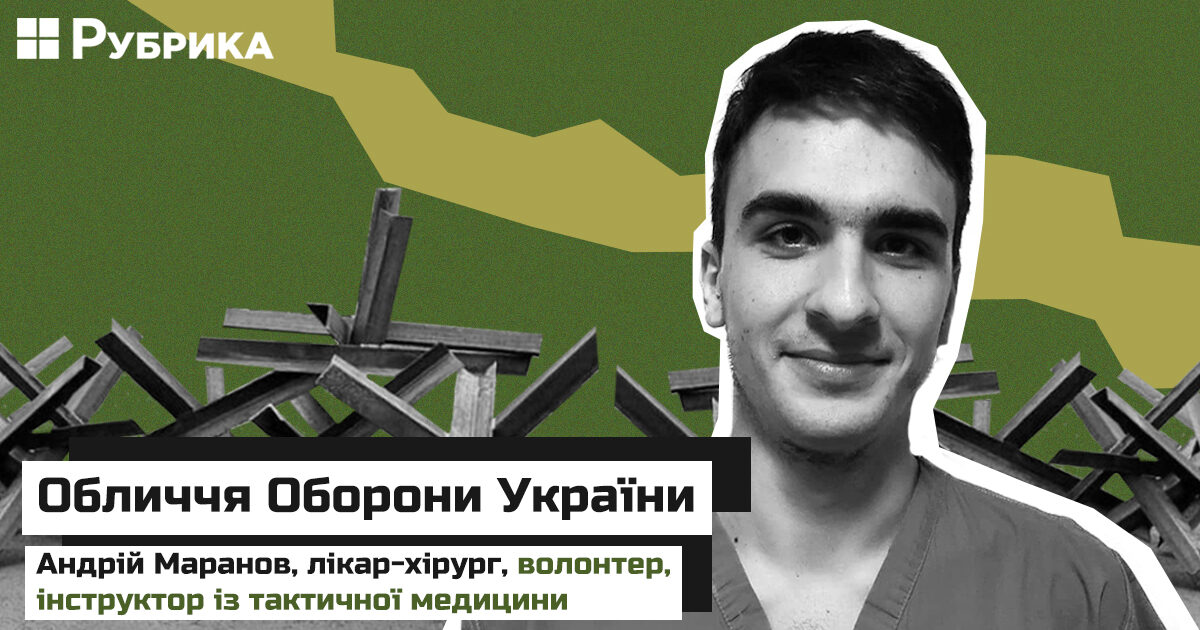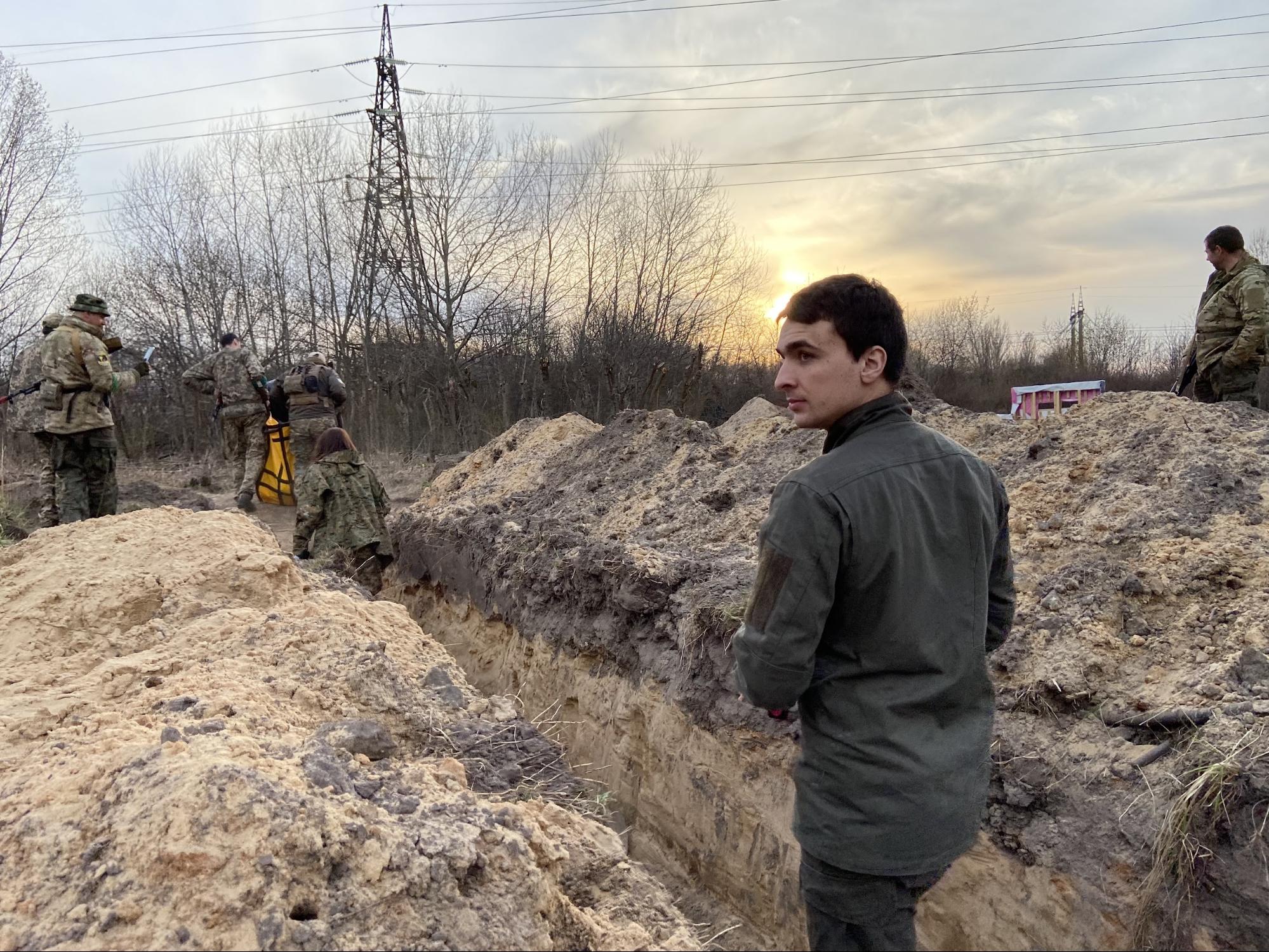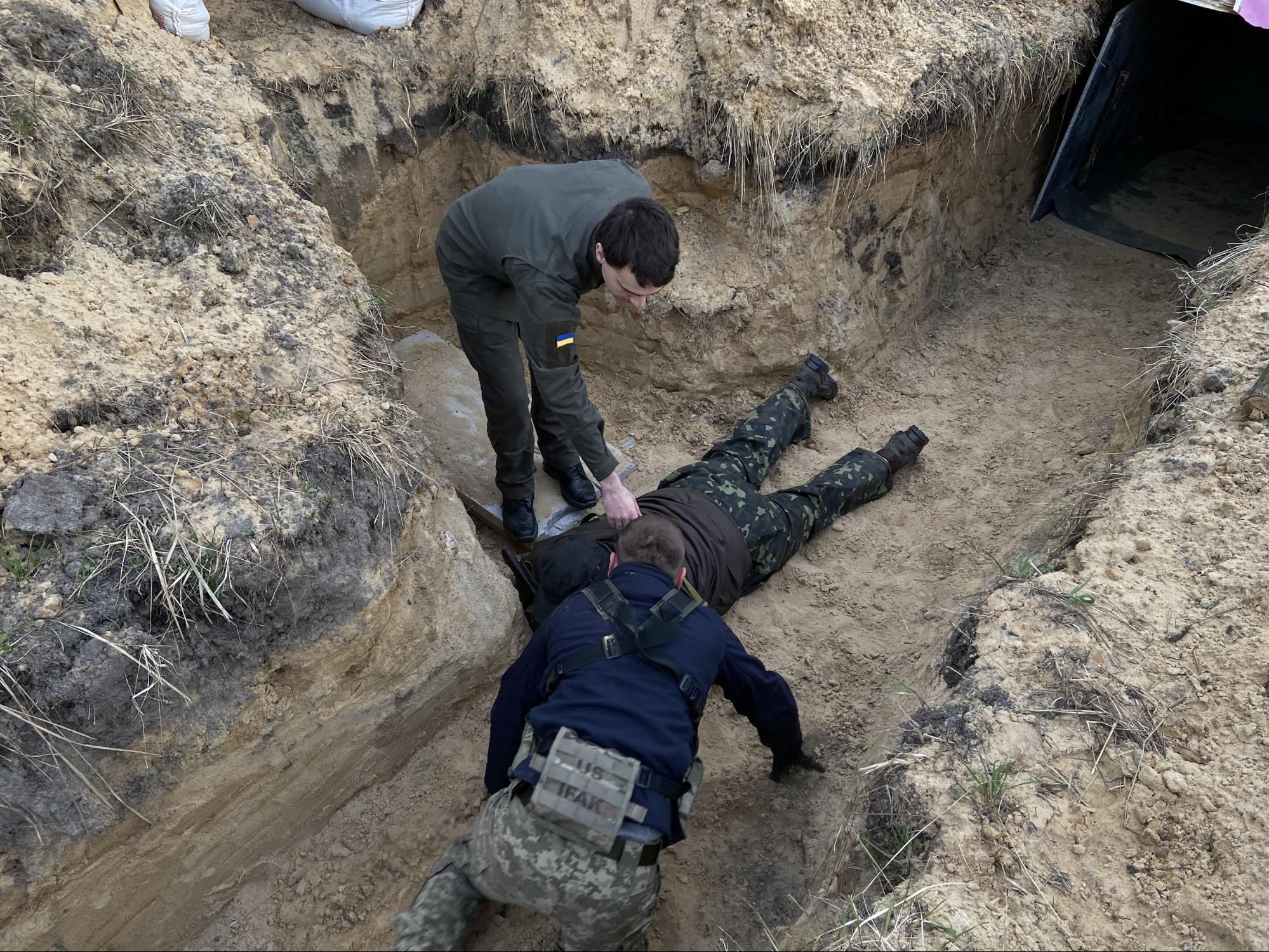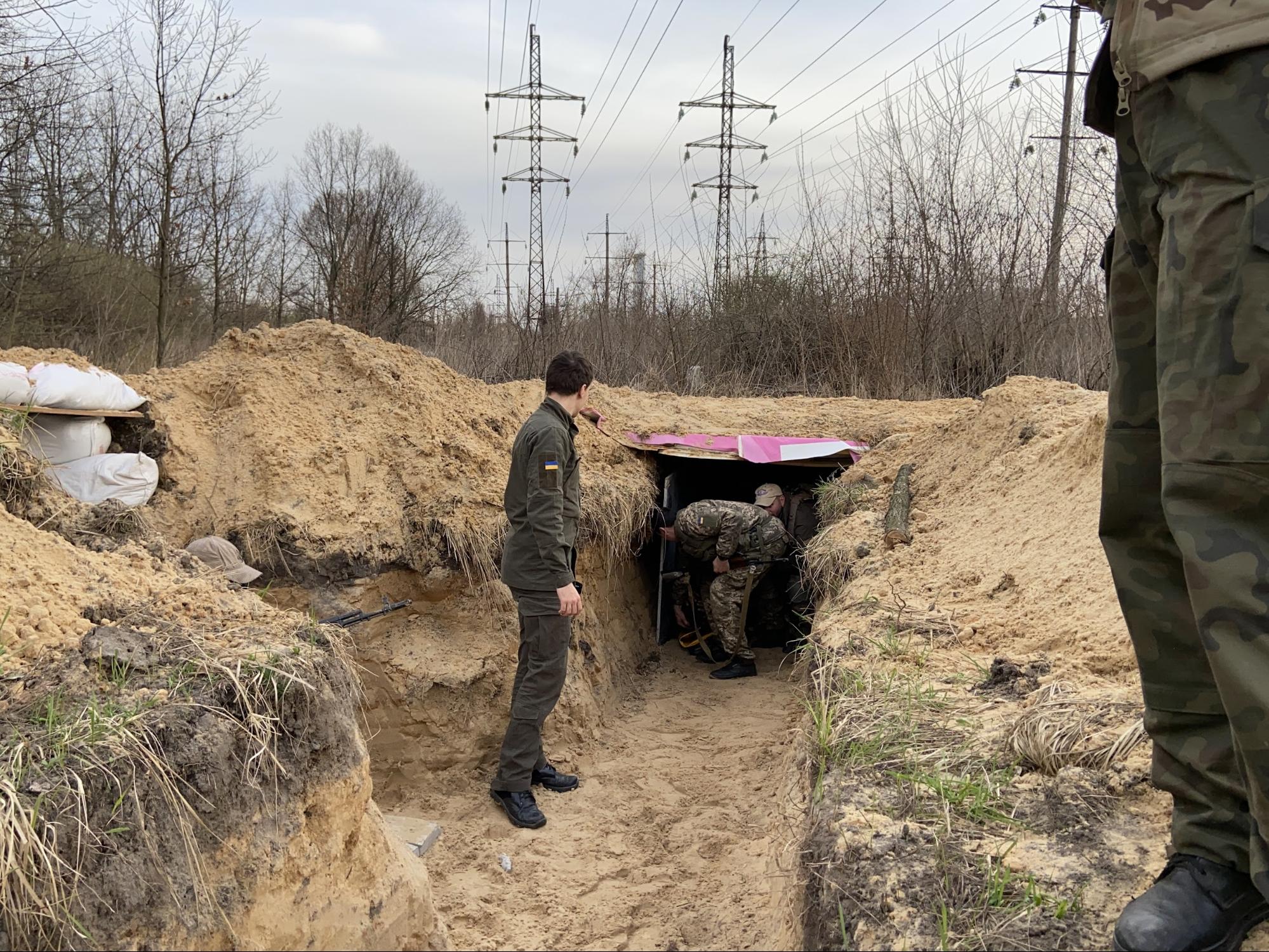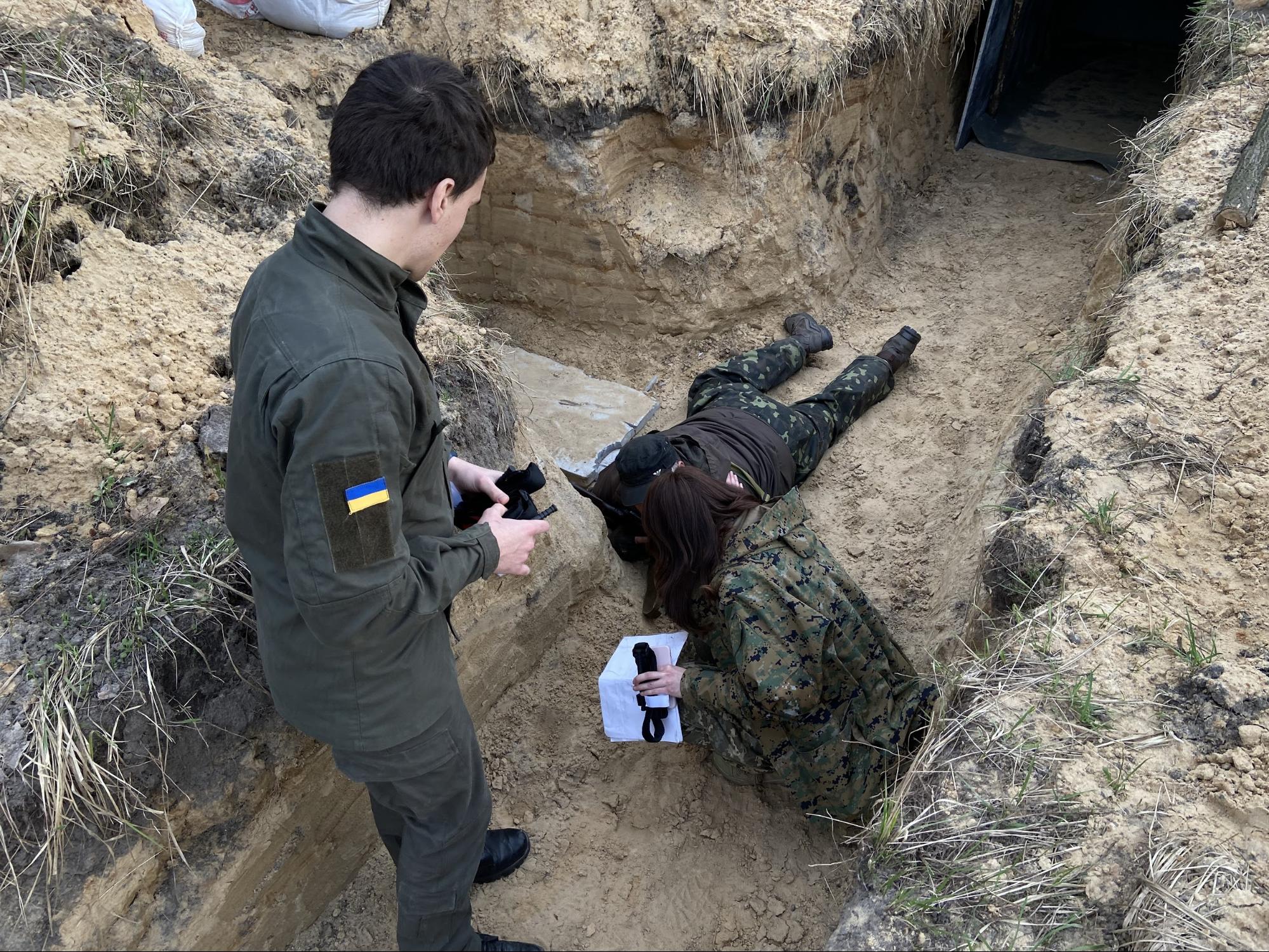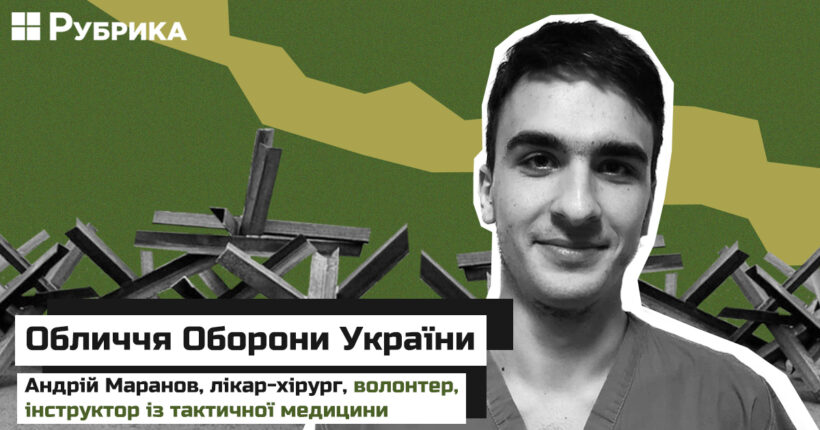
The Koleso tactical medicine training center appeared two weeks after the start of the full-scale invasion. The goal was to provide the military with sufficient knowledge on giving first aid to combatants.
Andriy, having medical experience, clearly understands that knowledge of how to provide pre-medical assistance saves lives. That is why the participants of tactical medicine training practice on training grounds, practicing their skills in conditions as close as possible to real life.
What is the sequence of providing pre-medical care?
"Our educational center is called "KoLeSo." The system was invented in 2014 by our defenders and medics, who were in the Joint Forces Zone. At the same time, it was agreed upon with the General Staff for the first time. And now, during russia's full-scale military aggression, we have restarted this project," Andriy says.
The fact is that there is one feature in the complex of pre-medical care actions — the sequence of its execution. It is very dangerous to confuse this sequence because the victim's life depends on it.
How is Koleso deciphered? (Ukrainian spelling КОЛЕСО – ed.)
- K — bleeding,
- O — examination of the respiratory tract,
- L — the condition of the lungs,
- E — breathing efficiency,
- C — the work of the heart,
- O — examination of the body and assessment of consciousness.
This term was coined by the sanitary instructor Olha Omelchuk in 2015, so it would be easier for our military to remember the rule of sequence of aid.
The "Wheel" became one of the innovations that volunteers and military personnel with medics invented during the war in eastern Ukraine. Andriy Maranov explains the sequence of actions:
"First, we stop critical bleeding. 80% of sanitary injuries occur precisely because of them. A turnstile is needed here. Now almost everyone knows what it is.
After that, we check the lungs for signs of any respiratory arrest or violation of the integrity of the respiratory tract; we transfer the victim to a stable position. And finally, the third stage is the heart. We evaluate the quality of applying the tourniquet, assess the signs of shock, the pulse."
In all NATO countries, the sequence of pre-medical care is deciphered by the ABCDE abbreviation. It is easier for English-speaking people to remember it – it is the first letter of the English alphabet. Those for whom English is not their native language can get confused in a critical situation, forget this sequence, or lose their way. That is why they invented the Ukrainian analog of this abbreviation.
What is MIST?
At the same time, there is another useful abbreviation – MIST. The MIST report is a card for filling in the basic indicators of the victim's condition. It is crucial to write them down before they get to the hospital.
What does MIST (Ukrainian spelling МІСТ – ed.) stand for?
M — the wounding mechanism,
I — information about injuries,
S — is the status of the wounded,
T — treatment given to the patient.
Military and civilian exercises
Andriy says that the team has already prepared a full-fledged training base in Kyiv:
"Military personnel have the opportunity to acquire theoretical skills and practice them on modern turnstiles, dummies, and then on a real training base. We have several separate bases: Blockpost, Clearing the city, and Trench. We simulate different situations, injuries, and various tactical tasks. We have another non-medical base where we teach soldiers how to properly evacuate their comrades if there are two or three of you."
The project was developed specifically for the military. Andriy says that volunteers and civilians periodically come to study with them because it is significant for them to have first aid skills.
"For example, Ukrzaliznytsia was recently instructed. We try to teach non-military people as well. Because the knowledge we teach in our practical courses is also useful for the general public.
I hope we will maintain the pace and continue this training for civilians even after our victory. Because this simple knowledge saves lives. It will be relevant even after the end of hostilities."
We work without days off
Andriy says that about 80-100 fighters pass through the Koleso center daily. "We work without days off. The military is very positive about the courses. Many people come to us for the second or third time. It is rather simple knowledge, but it is critically important to practice it until it becomes automatic.
For example, according to the standard, the turnstile is folded in 20 seconds. With critical bleeding, a person can lose consciousness in 30-45 seconds and die in three minutes.
If many soldiers are already familiar with tourniquets, then, for example, almost no one has worked with wound tamponade. We have mock-ups of wounds with blood substitutes, and fighters practice each wound type in pairs. They see in reality how to stop bleeding. It doesn't work out for everyone at once, but everything gets better with time."
Andriy also mentions foreign support:
"Quite serious is support from the USA. Coaches from the States constantly come to us, mostly doctors, military doctors who have experience in the war in Afghanistan," says Andrii. "Real people who have combat experience. The knowledge is very practical."
For a group of military personnel to attend such training, the management must organize and enroll their subordinates and bring the group to the exercise.
"After they have listened to the theory and worked out the practice, the fighters pass a practical exam. Then they go back."
Andriy rushes to the center. The lack of weekends and an extremely tight schedule do not allow you to relax. Such a state of affairs for military medics is commonplace today.
By the way, the Koleso center has also launched an online courseon pre-medical care in the conditions of military operations. Therefore, anyone willing can get acquainted with critically important knowledge for free.

"How can you go somewhere everyone is fleeing from?": a story of a paramedic who saves the military and dreams of making clothes

"It has been three months since my contract expired." A soldier from Kyiv shows Donetsk cats and destroys russian orcs

Fighting back against russians: How a common inventor became part of Ukraine's territorial defense
The material was prepared as part of the implementation of a grant competition from the NGO "Internews-Ukraine" with the financial support of Sweden and Internews (Audience understanding and digital support project). The opinions expressed in this publication reflect solely the author's point of view.
Newsletter
Digest of the most interesting news: just about the main thing




